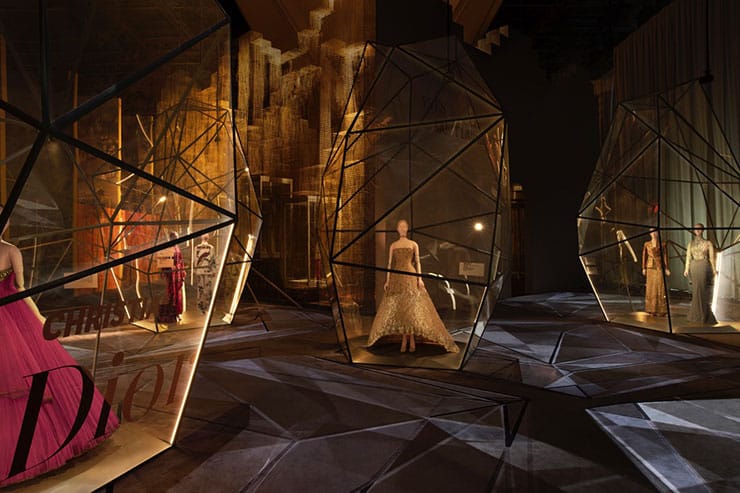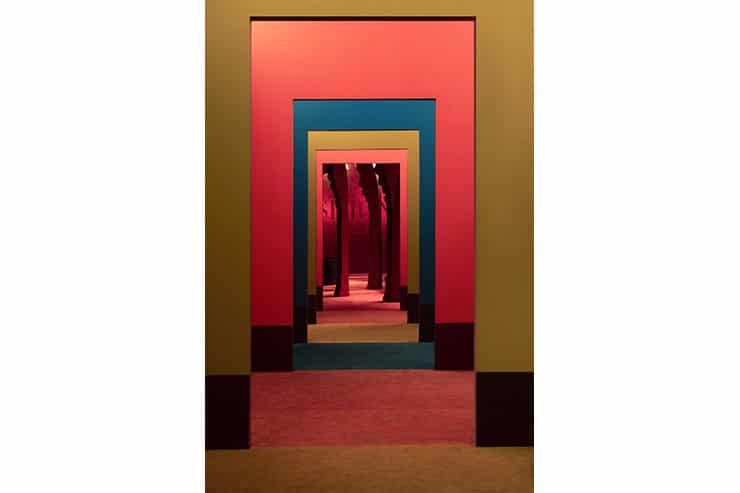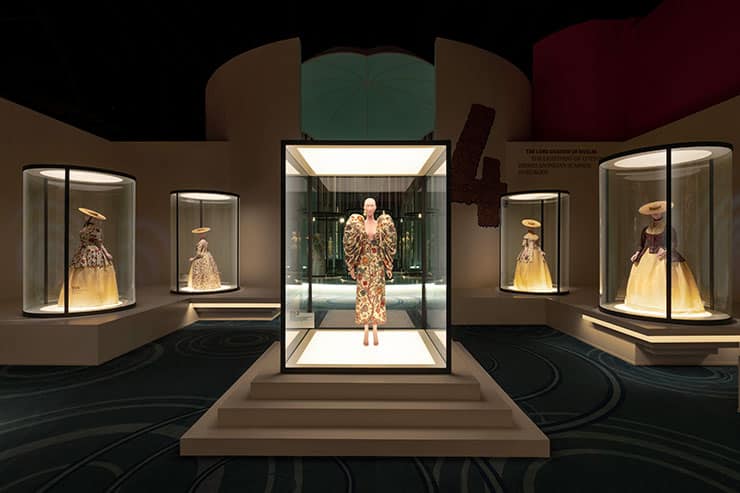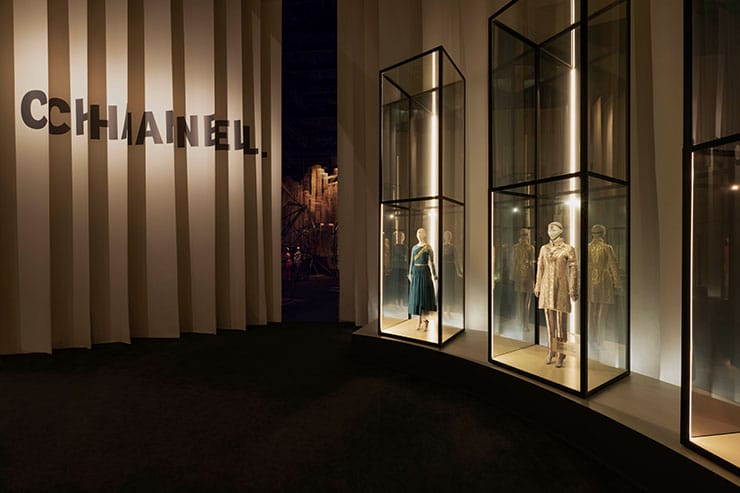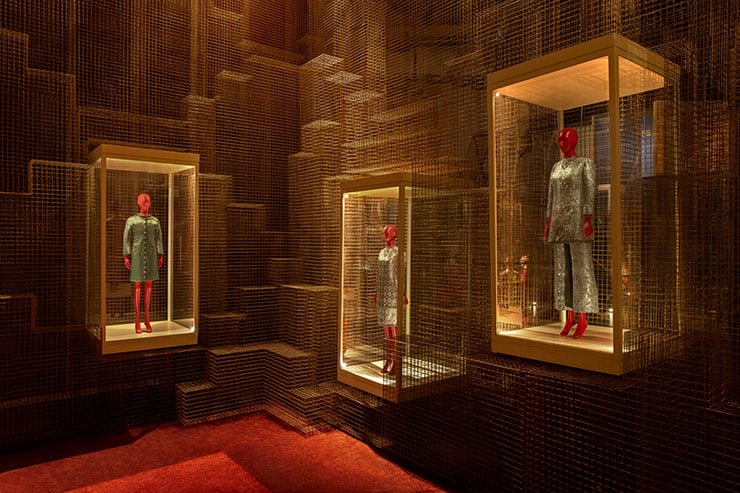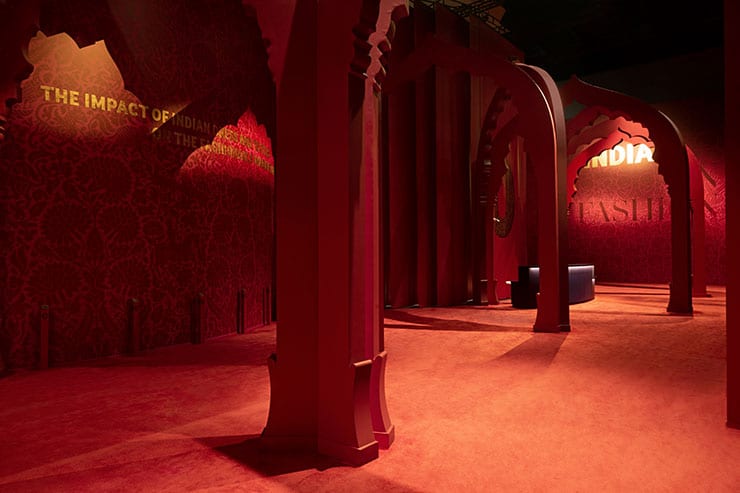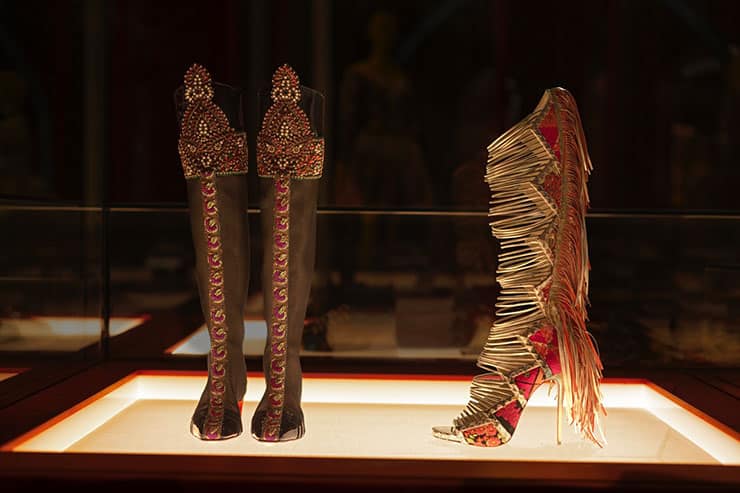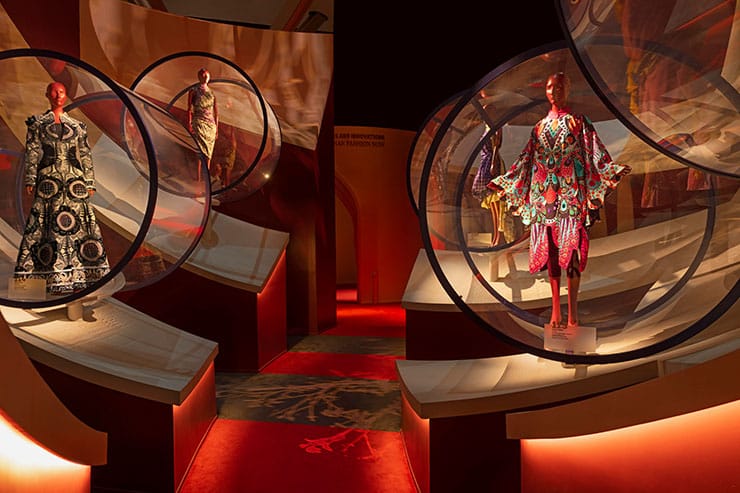- ABOUT
- JUDGING
- CONTACT
- MORE
- 2024 Entries
- Installations 2024
- Past Winners
- Subscribe
- [d]arc directory
- arc magazine
- darc magazine
India in Fashion: Nita Mukesh Ambani Cultural Centre, India
ProjectIndia in Fashion: Nita Mukesh Ambani Cultural CentreLocationMumbai, IndiaLighting DesignStudio ZNA, UKArchitectRooshad Shroff, IndiaInterior DesignPatrick Kinmoth, UKAdditional DesignCurator: Hamish Bowles | Associate Lighting Designer: Eby Vincent MatthewClientNita Mukesh Ambani Cultural CentreLighting SuppliersAbby Lighting, Leksa Lighting, Argos LightingPhotographyCourtesy of 'India in Fashion': Nita Mukesh Ambani Cultural Centre
India in Fashion: The Impact of Indian Dress and Textiles on the Fashionable Imagination explores the layered impact that traditional Indian dress, textiles and craft have had on the international fashion sensibility since the 18th century.
Whether it is transparent muslins, whimsical chintzes conceived on the Coromandel Coast, the varied draperies of the sari and dhoti, or the botehs of Kashmir’s shawls, the treasury of India’s sartorial and textile traditions have provided inspiration to royal courts, European haute couture like Dior, Chanel and Yves Saint Laurent, contemporary design visionaries, and even global fast fashion. The first exhibition of its kind in India, the show also traces the birth and development of the contemporary Indian fashion community.
Studio ZNA were invited to design and commission the lighting for this extraordinary exhibition; curated by Hamish Bowles, and designed by Patrick Kinmonth with Rooshad Shroff.
The exhibition design is a sequence of rooms constructed as whimsical buildings inspired by India’s rich architectural traditions through the centuries which frame the clothes that have evolved alongside them. This combined with the sheer scale of the centre’s halls gave us an amazing canvas to light – on the low level we designed bespoke lighting solutions in each room for the intricate and stunning fabrics while maintaining stringent conservation levels and at high level we used theatrical light fittings with dmx and colour mixing control to create a specific, dramaticly lit scenography for each section where the visitor enters and is immersed in the scene. Each section has a bespoke lighting approach both at high and low level with meticulous detailing into setworks.
The visitor enters the space through arches that are lit expressionistically, creating shadows as if sunlight was streaming through the architecture. They then make their way through colourblocked lightwell corridors of the introduction space. We created a classical daylit gallery feel through our diffused artificial windows. Then through the floating bridge where we evoke the structure of the Brighton pavilion and into Chintz. Here we designed luminous volumes for showcases which had lightsheets top and bottom to render both form and detail. Atmospheric water ripples were created with gobo lights dropped down into the space from high level. Moving into Muslin, the intricate fabrics are lit by internal mini spotlights within the showcases with coves at the base to evoke floating water lilies in a Mughal garden.
The first European fashion couture house room – Chanel, is lit with linear lines of light internal to the double height showcases and concealed mini spotlights to allow the embellishments to shimmer and sparkle. In Dior, the crystalline showcases are lit with asymmetrical linear lights and mini spots internal to cases supplemented with drop downs lights external to the cases. The lighting supports geometric scenography.
Walking into the step well inspired room of YSL, the gold mesh of the steps is lit with high level theatrical lights to create beams of sunlight that graze the gold mesh creating a moment of sparkle and awe. The visitor then moves through the wedding pavilion and into Saari where a garment considered quite traditional is lit in a modern way with graphic squares of light on the base of the cases and mini spotlights uplighting the garments. The journey through this section is like a promenade where the visitors pass through beams of light as if almost stepping in the scene of a film.
Then the visitor is greeted by the large structure of the Great Exhibition which has an internally softly lit central table containing a collection of jewellery, hats and shoes. The architecture is suggested by pools of lights on the floor allowing for s sense of luminosity and scale while presenting delicate objects at low light levels. Next stop is the Hippie Trail, a room inspired by the structures of the Jantar Mantar, this round lush room has luminous glowing showcases with lightsheets top and bottom. Outside the room, through the windows we created a dramatic cyclorama effect of a dusk sky beyond in hues of orange and purple, colours also inspired by the collection shown in this section. The exhibition then moves through Fashion Takes a Trip, with its projections and round showcases lit from dropdowns external to the cases, supplemented by mini uplights internal to the cases. There is a dynamic and layered play of light, projection and shadow.
Indian Contemporary, the finale, then goes on to showcase the incredible Indian designers with distinctive atmosphere and lighting for each pod representing a different designer; Abu Jani Sandeep Khosla, Anamika Khanna, Anita Dongre, Anuradha Vakil and Manish Arora to name a few. Each pod contains light detailing to set works and integrated beam shaping lights at higher level.
At high level we used DMX programmable LED theatrical fittings to cater to the large scale of the exhibition hall itself. At low level we used LED mini spotlights and LED linear lights within showcases and setworks, all dimmable to ensure strict conservation requirements are always maintained. Along with the designers we produced a sophisticated choreography of luminosity, where the amazing objects are given primary focus, but also where the visitor is very much part of the beautiful imagined world as they travel through the exhibition.
